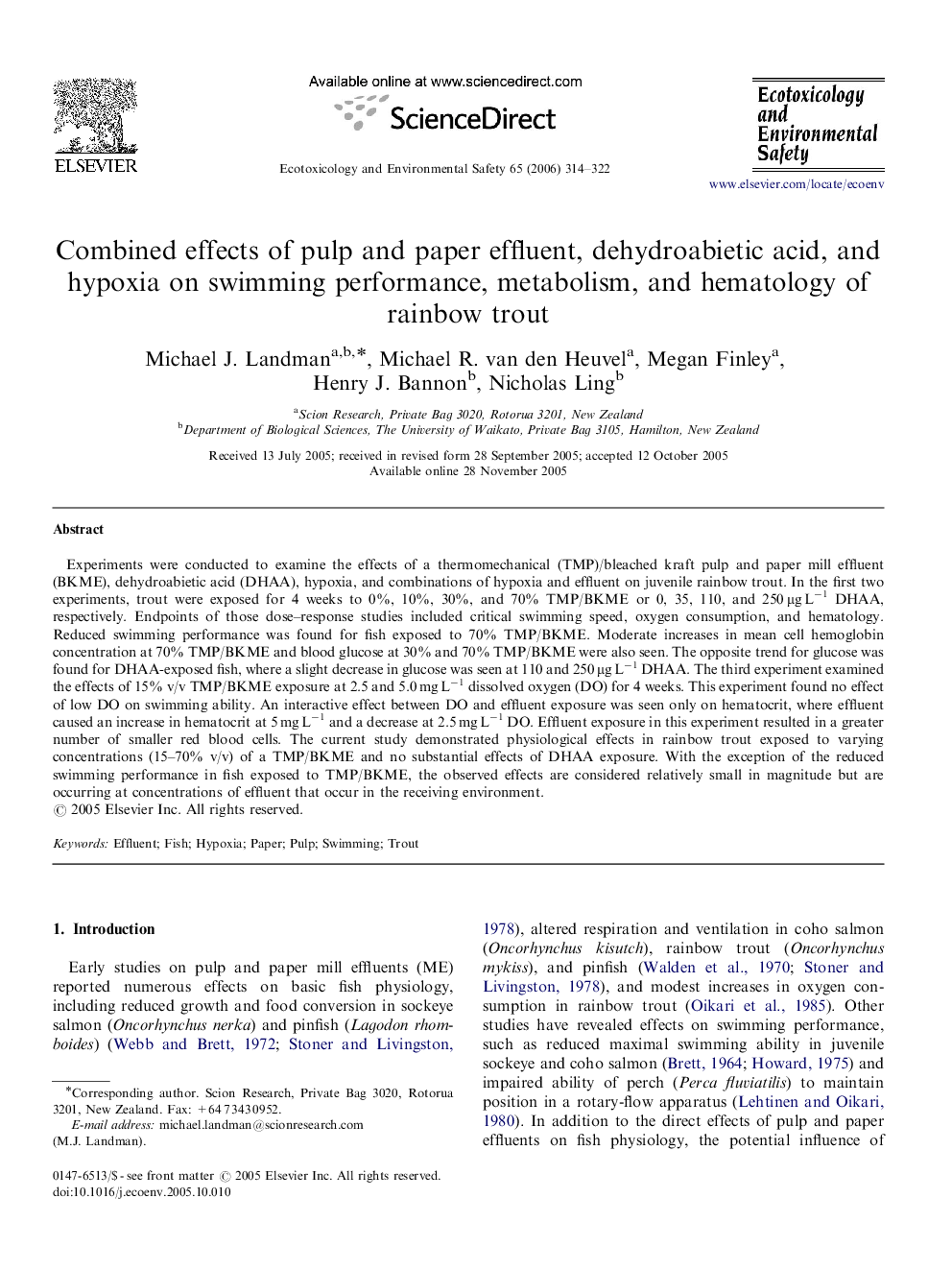| Article ID | Journal | Published Year | Pages | File Type |
|---|---|---|---|---|
| 4422544 | Ecotoxicology and Environmental Safety | 2006 | 9 Pages |
Abstract
Experiments were conducted to examine the effects of a thermomechanical (TMP)/bleached kraft pulp and paper mill effluent (BKME), dehydroabietic acid (DHAA), hypoxia, and combinations of hypoxia and effluent on juvenile rainbow trout. In the first two experiments, trout were exposed for 4 weeks to 0%, 10%, 30%, and 70% TMP/BKME or 0, 35, 110, and 250 μg Lâ1 DHAA, respectively. Endpoints of those dose-response studies included critical swimming speed, oxygen consumption, and hematology. Reduced swimming performance was found for fish exposed to 70% TMP/BKME. Moderate increases in mean cell hemoglobin concentration at 70% TMP/BKME and blood glucose at 30% and 70% TMP/BKME were also seen. The opposite trend for glucose was found for DHAA-exposed fish, where a slight decrease in glucose was seen at 110 and 250 μg Lâ1 DHAA. The third experiment examined the effects of 15% v/v TMP/BKME exposure at 2.5 and 5.0 mg Lâ1 dissolved oxygen (DO) for 4 weeks. This experiment found no effect of low DO on swimming ability. An interactive effect between DO and effluent exposure was seen only on hematocrit, where effluent caused an increase in hematocrit at 5 mg Lâ1 and a decrease at 2.5 mg Lâ1 DO. Effluent exposure in this experiment resulted in a greater number of smaller red blood cells. The current study demonstrated physiological effects in rainbow trout exposed to varying concentrations (15-70% v/v) of a TMP/BKME and no substantial effects of DHAA exposure. With the exception of the reduced swimming performance in fish exposed to TMP/BKME, the observed effects are considered relatively small in magnitude but are occurring at concentrations of effluent that occur in the receiving environment.
Related Topics
Life Sciences
Environmental Science
Environmental Chemistry
Authors
Michael J. Landman, Michael R. van den Heuvel, Megan Finley, Henry J. Bannon, Nicholas Ling,
